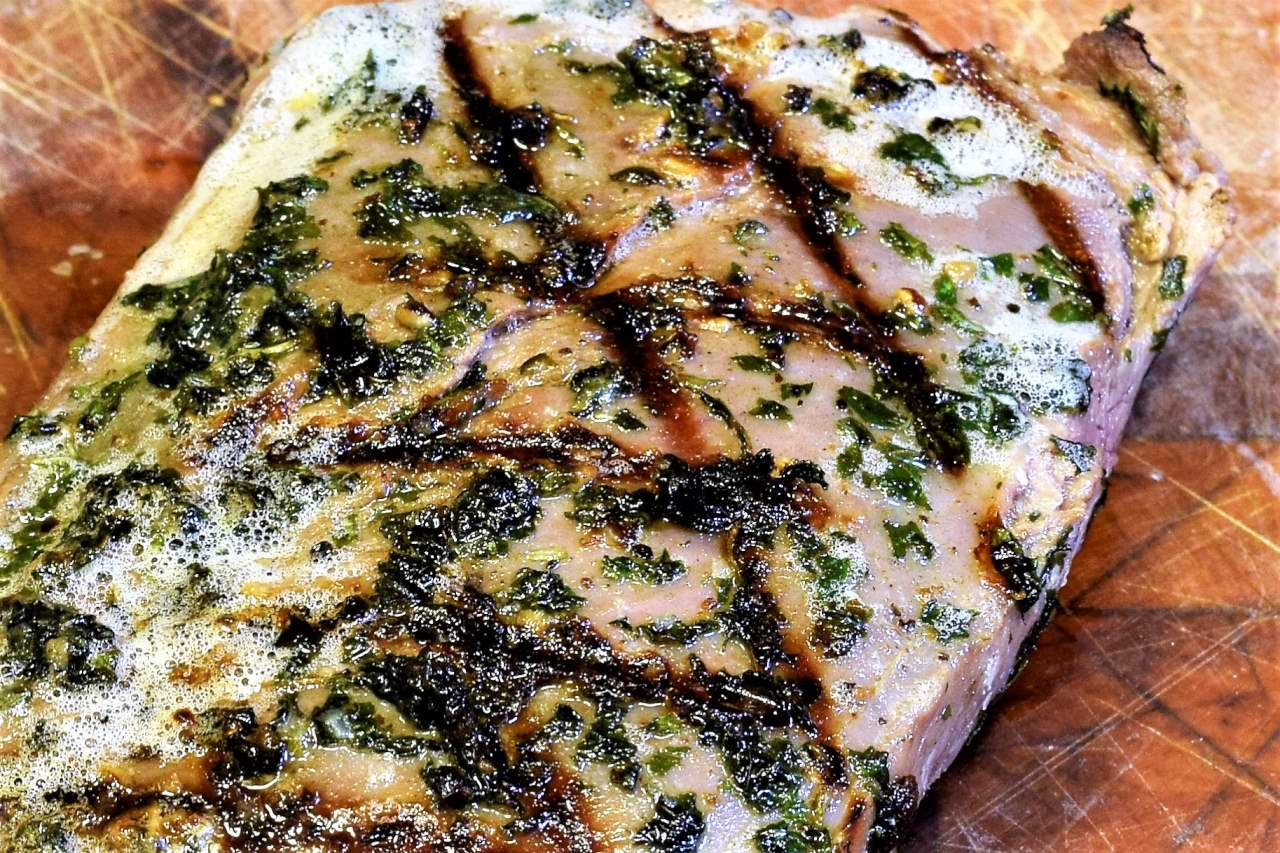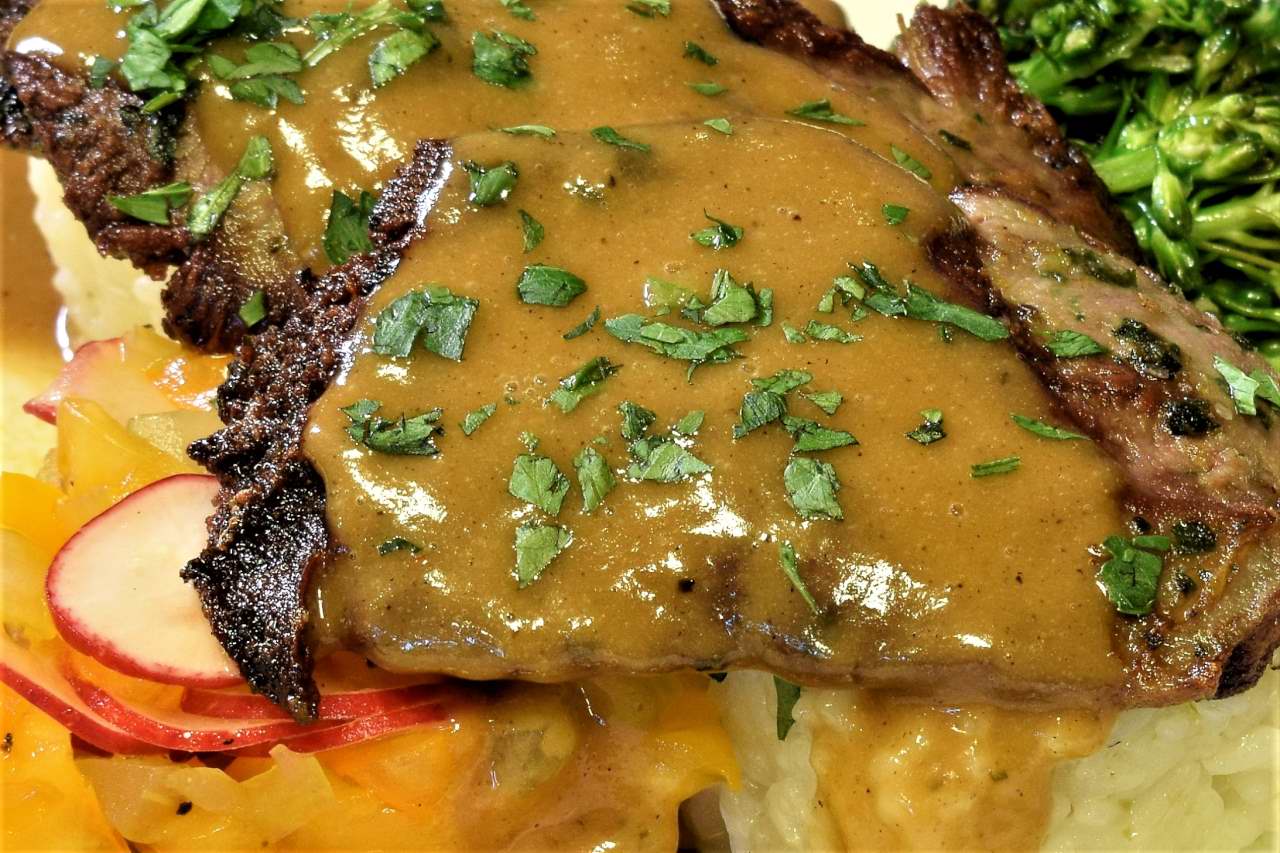Serves 4
Level of difficulty 2.5
Procedure:
Sous vide process the Magret in a sealed bag@
129 F/54 C for 6 hours.
This will pasteurize and preserve the duck breast. Shock cold in iced water to 70 F/21 C to prevent autolysis; refrigerate @40 F/4 C.
NOTE: I caution against using manufacturers’/markets’ packaging for sous vide processing. They are not necessarily dedicated to endure heat. In this case, I checked with the manufacturer to make sure there was nothing else in the bag (like a sponge), and that the plastic was heat rated for sous vide. They assured me it was.
Once the breasts are processed and chilled, remove from the bag. Remove the skin by using a knife to follow along; gently peeling the skin by hand works too!
 Fry the skin on low heat to render the fat, which we will save to make the emulsion. It will tend to curl, so I put a small pan on top to hold it flat–make sure you clean the bottom of the pan before you do this. The skin does not really get crisp because of this process. It is more like a confit, cooked out but with a soft texture. Set the skin aside to cool.
Fry the skin on low heat to render the fat, which we will save to make the emulsion. It will tend to curl, so I put a small pan on top to hold it flat–make sure you clean the bottom of the pan before you do this. The skin does not really get crisp because of this process. It is more like a confit, cooked out but with a soft texture. Set the skin aside to cool.
Sauce:
Measure 3 oz/90 ml of the duck fat reserved from rendering the skin. It needs to be at least 140 F/60 C, but no hotter than 183 F/84 C. Measure 1/2 oz/ 15ml. of Sous Jus, stock, or even white wine with a pinch of dried bouillon in it. S+P to taste, it takes very little. Add a few drops of Tamarind Concentrate
Pour the liquids into a tall, clear, 16 oz/450 ml glass that a stick blender will just barely fit into the bottom of. This is important in order to create the correct amount of localized friction. Slowly lower the stick blender into the glass and let the liquids settle. It is essential that the water-based products accumulate in the bottom and the oil hovers above. Slowly begin to pulse the stick blender.
Do not lift it up
Again, this is essential in order to maximize friction in the bottom of the glass. Continue to pulse, and you will see the liquids begin to emulsify. There is a short accompanying video HERE. Continue pulsing, and slowly tilt the stick blender to pull more oil down into the sauce. A little oil will always remain on the top; stir it in with a spoon. Even at this point, running the stick blender in the top of the sauce may reverse the emulsion! Keep the sauce between 140 F and 170 F (60 C-77 C).
Make the Muffaletta relish:
Chop the Nicoise olives, Broccolini, Garlic, Celery, and Carrot very fine in a food processor. Combine with the extra virgin olive oil and a pinch of salt and pepper.
Make the salad:
Sous vide process the gold potatoes @
183 F/84 C X 1 hour.
Shock the potatoes in ice water to 70 F, and then refrigerate at 40 F/4 C. Remove the potatoes from the bag and cut into thin strips, using a mandolin or by hand. Combine with the anchovies, black olives, capers, extra virgin olive oil and lemon juice, a few drops. Squeeze into a form and vacuum, if possible. Sprinkle the Muffaletta relish on the center of the plate. Remove the potato salad from the vacuum and ring and place on top of the relish. In the bottom right I show the potato salad au naturel to show how it looks if you choose not to vacuum it. Top the salad with a little bit of the sauce.
Creating the Crust
Coat the the rendered skin and breast with egg white and sprinkle with S+P. Press chopped parsley onto the surface, top and bottom, and allow to rest for a few minutes.
Heat vegetable oil in a pan to
350 F/176 C,
and deep-fry the skin. Some people want to call this “flash frying” but that implies that deep-frying is excessive in principle. It does not take long; heat the skin all the way through to avoid greasiness. The surface will be crispy, but the skin itself will still be somewhat unctuous until it cools. Set the skin aside. Deep-fry the breast in the same oil as the skin, at the same temperature, until it is brown as shown. The internal temperature should be 129F/54C.
NOTE: There is no shame in well done. If you or your spouse or guests prefer the duck less pink, just leave it in the oil longer or use a torch to sear the medallions after slicing. The duck will still be delicious with a deep, rich flavor.
Before and after:
After letting it rest on the board, slice the breast on the bias to create uniform medallions.
Stack 2 or 3 of the medallions on top of the salad, and arrange some of the now crispy skin around the presentation.
Drizzle the medallions with the butter sauce, sprinkle with parsley, and enjoy!










